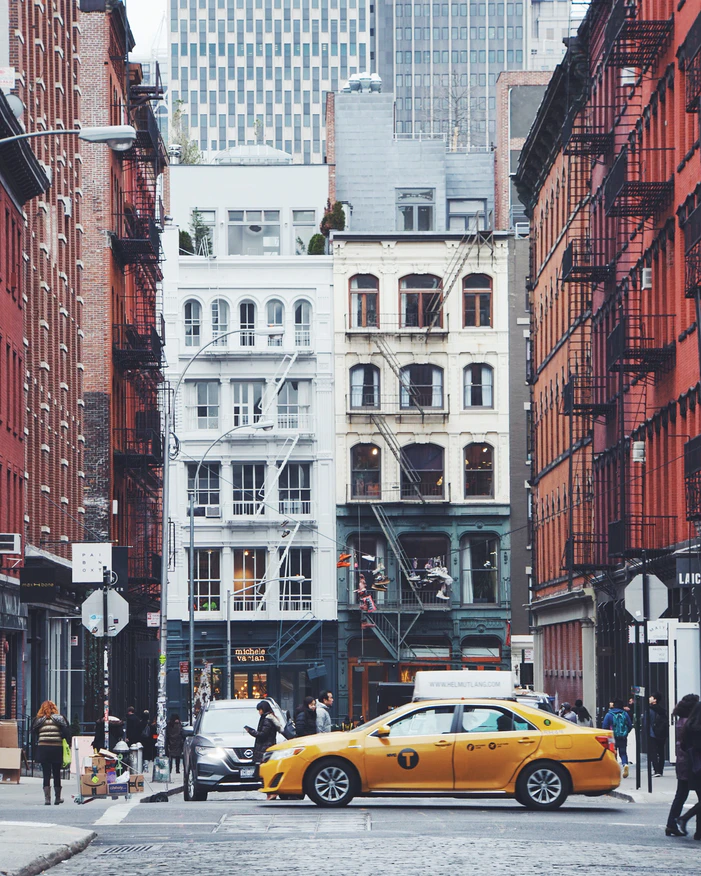The Fight For SoHo
Mayor Bill de Blasio’s plan to rezone one of the New York City’s most expensive neighborhoods has ignited a debate about gentrification, cultural preservation, and affordable housing.
“There’s a scale issue of whether the neighborhood controls what’s built, or whether or not there’s a citywide force from the outside. How do you get racial justice in this place?” said Sharon Zukin, a “Loft Living: Culture and Capital in Urban Change” in an interview with ‘The New York Times.’
Formerly nicknamed “Hell’s Hundred Acres” for its frequent and deadly fires that sprung from crumbling warehouses, SoHo became the flocking point for artists in the 1950s who took advantage of cheap rents and spacious lofts. But they soon faced a complication: it was illegal to live in SoHo. The neighborhood was zoned as an industrial space, so apartments were not allowed.
As the city began to evict artists, the artists fought back. In 1961, local artists formed the Artist Tenants Association and advocated for legalized living in SoHo. Artists across the city went on strike, refusing to let their art be displayed in galleries until the situation was improved. Although the artists had several short-term victories in the 1960s, it was not until the start of the 1970s that the area was rezoned for residential use, and the artists had full permission to work and live there.
Rents skyrocketed over the following decades, as new residents put the once fire-torn, disheveled neighborhood on the map. SoHo gradually transformed from blocks of empty lots and decaying factories to the upscale boutiques and art galleries it is known for today.
The neighborhood’s humble beginnings might come as a shock to many New Yorkers because if there is one word that comes to mind when they hear SoHo, it is “expensive.” The average monthly rent for a two-bedroom apartment is currently $9,838. It is also exceedingly Caucasian. About 80% of residents are Caucasian, almost double the New York City average of 45%.
A new rezoning plan aims to address this lack of affordability and diversity. According to city estimates, it would involve building 3,200 additional apartments in 10 years with 800 of those being affordable units. “The pandemic and the movement for racial justice make clear that all neighborhoods must pull their weight to provide safe, affordable housing options,” said Vicki Been, Deputy Mayor of Housing and Economic Development.
However, there are many that have expressed concerns with the plan. One concern is that it would erase what makes Soho unique. “What they’re proposing would eat away at and eventually erase what makes SoHo so special and desirable, and therefore a place where people want to live and have businesses,” said Yukie Ohta, founder of SoHo Memory Project.
Another worry is that the plan could do the opposite of what it was intended to do and make SoHo and NoHo less affordable. The Greenwich Village Society for Historic Preservation released a 32-page report in March claiming that the project would “result in a significant increase in residents at the uppermost end of the income spectrum [and]…. a significantly higher share of white residents and a reduced share of Asian residents.”
Despite these criticisms and a lawsuit claiming that the city did did not hold in-person meetings with residents, the project is already underway. Ultimately, the plan has repercussions that expand beyond the confines of the neighborhood. SoHo has long stood as an artistic, expensive, and iconic part of the city, and the success or failure of the rezoning plan could influence the fate of similar integration plans elsewhere.
“The pandemic and the movement for racial justice make clear that all neighborhoods must pull their weight to provide safe, affordable housing options,” said Vicki Been, Deputy Mayor of Housing and Economic Development.
Yona Litwin is a Copy Chief for ‘The Science Survey.' He enjoys the fact that journalistic writing is driven by a variety of voices, and that a single...

